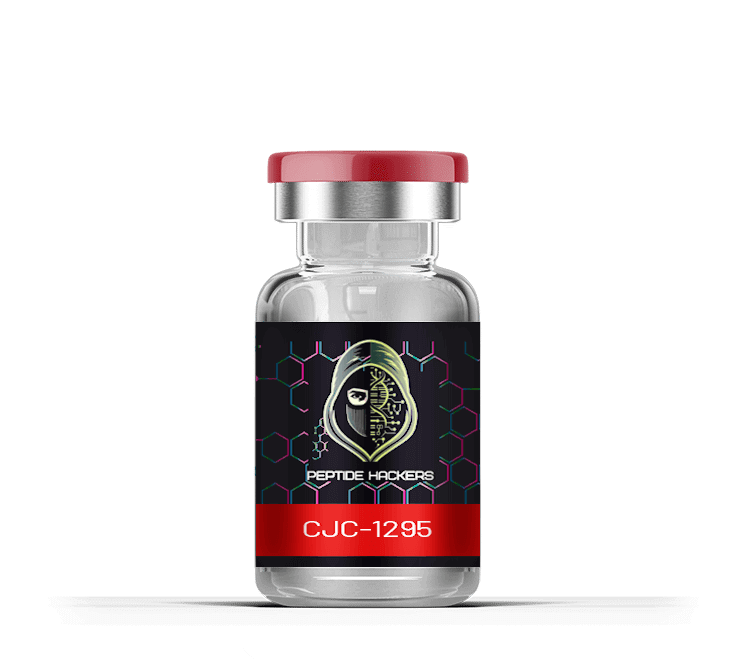LL-37: The Superhero Peptide Fighting Germs and Healing Wounds

LL-37 Peptide: The Human Antimicrobial Peptide
Overview
The human body contains LL-37, the sole human peptide member of the cathelicidin family functioning as an antimicrobial peptide and major defense mechanism. LL-37 attacks bacteria, viruses, and fungi, while controlling inflammation and aiding in wound recovery. Scientists show great interest in LL-37 because it may provide solutions to persistent infections, antibiotic resistance, and cancer treatment.
This guide covers LL-37 peptide benefits, including ll37 peptide benefits how it works, and its potential as a powerful ally in fighting drug-resistant bacteria, boosting immunity, and aiding cancer research.
Key Takeaways of LL-37 Peptide
-
Natural Defense: Your body produces this antimicrobial peptide as a natural defense mechanism, protecting you from bacterial, viral, and fungal pathogens. As a host defense peptide, LL-37 boosts antimicrobial effectiveness while enhancing immune system responses.
-
Breaks Biofilms & Resistant Infections: Breaks through protective biofilms, delivering significant results against chronic infections.
-
Immune Balance & Healing: Regulates inflammation and accelerates wound healing, essential for autoimmune diseases and persistent non-healing wounds.
-
Potential in Antiviral & Cancer Research: Research indicates LL-37's potential in fighting viruses and cancer by restricting viral transmission and enhancing immune system detection of cancer cells.
Introduction to Antimicrobial Peptides
The body produces cationic antimicrobial peptides (AMPs), small molecules that fight infections by capturing bacteria, viruses, and fungi, stopping their growth. AMPs help improve immune system effectiveness, especially against antibiotic-resistant “superbugs.”
What Is LL-37?
LL-37 is a protective protein produced by your body to combat infections. It is the unique only human member of the cathelicidin family, demonstrating antibacterial, antiviral, and antifungal capabilities. Various cell types, including epithelial cells and mast cells, generate LL-37 for protective functions, wound healing, and immune regulation.
The distinctive feature of LL-37 is its spiral structure consisting of 37 amino acids, resistant to proteolytic degradation, allowing prolonged activity. Since its discovery in the 1990s, LL-37 has been studied extensively for its effects on lung health, gut health, wound healing, and cancer treatment.
How LL-37 Works
-
Broad Spectrum Antimicrobial Activity: Binds and disrupts bacterial, fungal, and viral cell membranes, including biofilm-producing pathogens.
-
Immune System Modulation: Regulates the immune system, controlling inflammation and fighting infectious agents effectively.
-
Wound Healing: Attracts mesenchymal stem cells to wounds, accelerating healing processes.
-
Anti-Biofilm: Disrupts protective bacterial biofilms, simplifying infection treatment.
-
Antiviral Activity: Reduces or halts virus replication, particularly respiratory viruses like RSV.
-
Anti-Cancer Potential: Enables the immune system to detect and fight specific cancer cells, though more research is needed.
LL-37 Benefits
-
Fights Stubborn Infections: Effective against persistent, antibiotic-resistant bacterial infections.
-
Supports Autoimmune Management: Regulates immune system responses in autoimmune conditions such as psoriasis and rheumatoid arthritis.
-
Speeds Wound Recovery: Beneficial for healing slow-to-heal wounds, such as diabetic ulcers.
-
Targets Resistant Bacteria: Effective against Pseudomonas aeruginosa biofilm-based infections.
-
Anti-Inflammatory Effects: Calms the immune system to protect healthy cells.
-
Lung and Gut Health: Decreases inflammation in cystic fibrosis and stabilizes gut microbial populations.
Why LL-37 Is Special
LL-37 functions both as an antimicrobial agent and an immune system regulator. Unlike conventional antibiotics, it destroys bacteria and helps control inflammation and tissue repair. Its stability allows it to maintain effectiveness over prolonged periods, enhancing the body's innate immune defenses.
Role in Wound Healing and Tissue Repair
LL-37 is integral to wound healing and tissue repair. It is found in epithelial cells, neutrophils, and macrophages, preventing biofilm formation, a significant barrier in chronic wound healing. By inhibiting biofilms, LL-37 facilitates wound debridement and faster wound closure. It also regulates inflammation, preventing autoimmune diseases and enhancing tissue repair. LL-37 stimulates growth factors like epidermal growth factor receptor, crucial for wound healing.
Cancer Treatment and LL-37
LL-37, the human cathelicidin ll 37, shows potential as an anticancer agent. It induces apoptosis in various cancer cells, including lung and breast cancer cells. LL-37 activates natural killer cells and immune complexes to eliminate cancer cells. More studies are required to confirm LL-37's precise role in cancer treatment and its potential as an alternative to conventional antibiotics.
Immune System Modulation
LL-37 significantly modulates the immune system by activating dendritic cells, T cells, and mast cells, crucial for innate and adaptive immunity. It stimulates cytokines and chemokines, recruiting immune cells to infection sites, and modulates inflammation to reduce tissue injury and promote repair. Cationic host defence peptides like LL-37 also induce neutrophil extracellular traps to eliminate pathogens effectively.
Host-Microbe Interactions and LL-37
LL-37 plays a crucial role in host-microbe interactions as one of the cationic host defence peptides , binding to and eliminating microbial pathogens such as Gram-positive and Gram-negative bacteria. It recognizes pathogen-associated molecular patterns (PAMPs), activating innate immunity and influencing immune responses to infections. LL-37 also prevents biofilm formation, essential for clearing chronic infections.
LL-37 in Action: Examples
-
Chronic Infections: Effective against biofilm-forming bacteria, common in resistant infections.
-
Autoimmune Diseases: Controls excessive immune responses in rheumatoid arthritis.
-
Antiviral Activity: Slows viruses like RSV, reducing transmission.
-
Cancer Research: Helps immune detection of tumor cells; caution needed for certain cancers.
-
Oral Health: Affects human gingival fibroblasts, critical for periodontal disease research.
LL-37 vs. Conventional Antibiotics
|
Feature |
LL-37 Peptide |
Conventional Antibiotics |
|---|---|---|
|
Antimicrobial Range |
Bacteria, fungi, viruses |
Mostly bacteria-focused |
|
Targets Biofilms |
Yes |
Limited |
|
Immune System Modulation |
Regulates inflammation |
None |
|
Promotes Wound Healing |
Yes |
No |
|
Effect on Resistant Bacteria |
Often effective |
Sometimes ineffective |
Possible Side Effects
LL-37 is well tolerated but may cause mild redness and swelling at injection sites. It may overstimulate the immune system, particularly in individuals with autoimmune diseases. Research indicates potential implications for cancer progression, requiring medical supervision.
LL-37 Usage in Different Conditions
-
Chronic Infections: Breaks down biofilms in antibiotic-resistant bacteria like Pseudomonas aeruginosa.
-
Wound Healing: Enhances healing in hard-to-heal wounds such as diabetic ulcers.
-
Autoimmune Diseases: Reduces inflammation in rheumatoid arthritis, psoriasis, and similar conditions.
-
Respiratory Infections: Potential to slow viruses targeting the lungs.
Future Directions for Research
Further research is necessary to fully understand LL-37's potential in wound healing, cancer treatment, and immune modulation. Continued studies should explore LL-37's role in host-microbe interactions and develop new antimicrobial agents, referencing recent findings (DOI: 10.1016, DOI: 10.4049/jimmunol).
Conclusion
LL-37 demonstrates exceptional antimicrobial activity, immune modulation, and wound healing properties. Its ability to disrupt biofilms and target antibiotic-resistant bacteria makes it valuable for treating infections, autoimmune diseases, and cancers. Consult healthcare providers to evaluate LL-37 therapies' suitability for individual needs.
References for LL-37 Article
-
Wound healing activity of the human antimicrobial peptide LL37. Peptides. 2011;32(7):1469–1476. doi:10.1016/j.peptides.2011.06.005. Retrieved from https://pubmed.ncbi.nlm.nih.gov/21693141/
-
The Human Cathelicidin Antimicrobial Peptide LL-37 as a Potential Treatment for Polymicrobial Infected Wounds. Front Immunol. 2013;4:143. doi:10.3389/fimmu.2013.00143. Retrieved from https://pmc.ncbi.nlm.nih.gov/articles/PMC3699762/
-
Little peptide, big effects: the role of LL-37 in inflammation and autoimmune disease. J Immunol. 2013;191(10). doi:10.4049/jimmunol.1302005. Retrieved from https://pmc.ncbi.nlm.nih.gov/articles/PMC3836506/
-
Significance of LL-37 on Immunomodulation and Disease Outcome. Biomed Res Int. 2020;2020:8349712. doi:10.1155/2020/8349712. Retrieved from https://pmc.ncbi.nlm.nih.gov/articles/PMC7246396/
-
Human cathelicidin, LL-37, inhibits respiratory syncytial virus infection in polarized airway epithelial cells. BMC Res Notes. 2016;9. doi:10.1186/s13104-015-1836-y. Retrieved from https://stacks.cdc.gov/view/cdc/37736/
-
The Human Antimicrobial Peptide LL-37 Is a Multifunctional Modulator of Innate Immune Responses. J Immunol. 2002;169(7):3883–3891. doi:10.4049/jimmunol.169.7.3883. Retrieved from https://journals.aai.org/jimmunol/article/169/7/3883/35412/The-Human-Antimicrobial-Peptide-LL-37-Is-a


